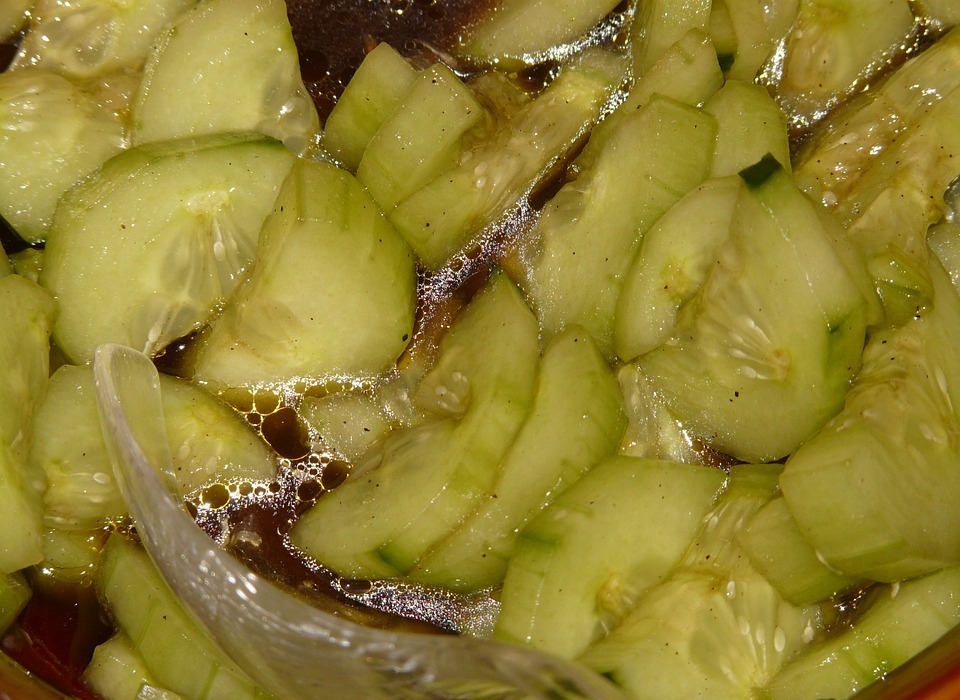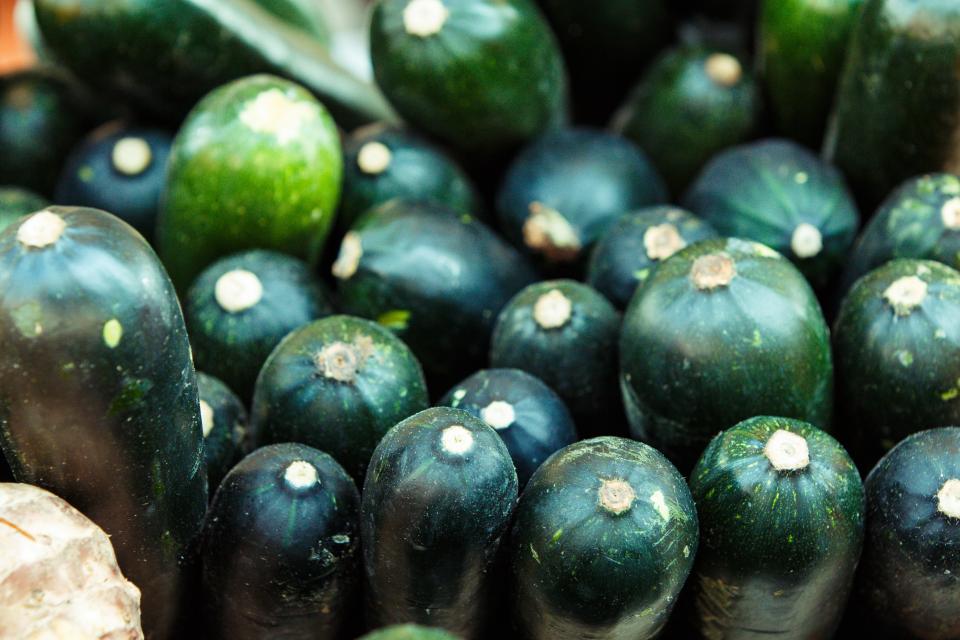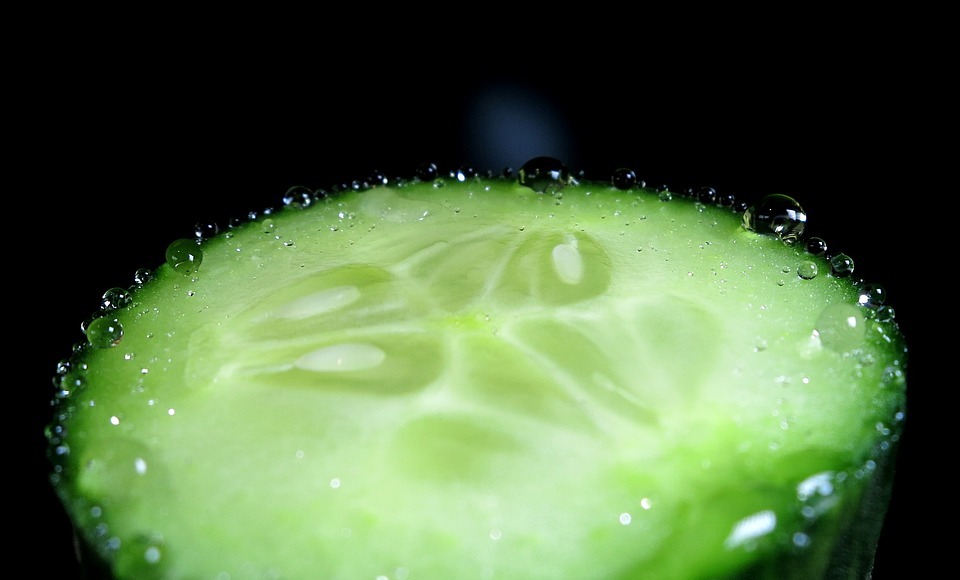The sight of a cucumber suddenly appearing near a cat can lead to a flurry of startled meows, frantic scrambling, and even hissing. This seemingly inexplicable fear has become a popular source of amusement online, with countless videos showcasing cats’ panicked reactions. But what's behind this strange phobia? Is it simply a quirk of feline behaviour, or is there a deeper scientific explanation? In this article, we delve into the fascinating world of feline psychology and explore the reasons why cucumbers seem to trigger such an intense fear in our furry friends.
Part 1: Understanding the Phenomenon

1.1 The Cucumber Conundrum: Observations and Anecdotes
The most common scenario involves a cat, often engrossed in eating or playing, when a cucumber is suddenly placed behind it. The cat, unaware of the cucumber's presence, will often react with extreme fear upon noticing it, jumping back, hissing, and displaying other signs of distress. This reaction is not confined to a specific breed or age group; it has been observed in cats of various breeds and ages.
- Sudden Appearance: The element of surprise is crucial. The sudden appearance of the cucumber, often while the cat is distracted, triggers the fear response. It's like someone suddenly appearing in your blind spot; your natural instinct is to jump back and figure out what's going on.
- Size and Shape: The cucumber's shape and size, particularly its length, can resemble a snake, a natural predator of cats. This resemblance could contribute to the fear response. The long, cylindrical shape, combined with the sudden movement (if the cucumber is placed quickly), might trigger the cat's instinctive fear of snakes.
- Sensory Perception: Cats rely heavily on their senses of smell and sight. The cucumber's odour, which some cats may find unfamiliar, could also trigger a defensive reaction. The scent of a cucumber, while not unpleasant to humans, might be perceived differently by cats. Additionally, the cucumber's smooth, green surface might stand out against the usual textures in a cat's environment, making it seem more threatening.
- Individual Variability: Not all cats react to cucumbers in the same way. Some show intense fear, while others exhibit mild curiosity or no reaction at all. This suggests that individual personality and past experiences play a role. Some cats might be more prone to fear and anxiety, while others might be more curious and less easily startled. Additionally, if a cat has had a negative experience with a cucumber in the past, such as being startled or even physically hurt, they are more likely to develop a conditioned fear response.
1.2 The Internet's Role: Dissemination and Amplification
The internet has played a significant role in amplifying the phenomenon of cats' fear of cucumbers. Countless videos, often shared on social media platforms, showcase cats reacting with comical fear to cucumbers placed near them. This exposure has led to widespread awareness and speculation, further fueling the idea that cucumbers are universally terrifying to cats.
- Viral Videos: The wide spread of videos showcasing cats’ reactions to cucumbers has amplified the phenomenon, leading to further curiosity and speculation. These videos often go viral, attracting millions of views and shares, perpetuating the idea that cucumbers are a universal fear for cats.
- Social Media Influence: Online communities and social media platforms have contributed to the widespread belief that cucumbers are a universal fear for cats, even if this might be exaggerated. Social media allows for quick and easy sharing of content, making it easier for videos of cats reacting to cucumbers to spread rapidly. This creates a snowball effect, with more people becoming aware of the phenomenon and sharing their own experiences and interpretations.
Part 2: The Science Behind Feline Fear

2.1 The Nature of Fear in Cats
Fear is a fundamental emotion that plays a crucial role in animal survival. It is a complex physiological and psychological response triggered by perceived threats. This response is designed to protect animals from danger and ensure their survival.
- Survival Instincts: Fear is a primal instinct that has evolved to protect animals from danger. It triggers physiological and behavioural responses designed to avoid threats. These instincts are deeply ingrained in the cat's evolutionary history, ensuring their ability to stay safe from predators and other dangers.
- Fight-or-Flight Response: When faced with a perceived threat, cats engage in the fight-or-flight response. This involves adrenaline surges, increased heart rate, and either aggressive behaviour or immediate escape. This response is a rapid and automatic mechanism for dealing with immediate danger, allowing the cat to either confront the threat or flee to safety.
- Predator-Prey Dynamics: Cats are natural predators, but they also have their own predators. Fear of snakes, large dogs, and other potential threats is ingrained in their genetic makeup. This inherent fear of predators is crucial for the cat's survival in the wild.
2.2 The Role of Sensory Perception in Fear
Cats rely heavily on their senses to perceive and interpret their environment. The sudden appearance of an unfamiliar object, coupled with a potentially unfamiliar scent, can trigger a heightened state of alertness and fear.
- Visual Cues: Cats have excellent vision and are sensitive to movement. The sudden appearance of a large, unfamiliar object can trigger an alarm response. The movement of the cucumber, even if it is a slow and deliberate placement, might be perceived as a potential threat by the cat. Their ability to see in low light also means they can detect movement in dimly lit areas, making them even more sensitive to sudden changes in their environment.
- Olfactory Cues: Cats have a strong sense of smell. The cucumber's scent, which may be unfamiliar or perceived as unpleasant, can contribute to a negative association. While the smell of a cucumber might not be offensive to humans, it could be perceived as strange or even unpleasant by cats. This unfamiliar scent might trigger a negative response, especially if it's associated with a sudden appearance of the cucumber.
- Auditory Cues: While less prominent in this scenario, the sound of a cucumber being placed near a cat could also contribute to their startled reaction. If the cucumber is placed with a thud or other loud noise, it could amplify the cat's fear response. Additionally, cats are sensitive to high-frequency sounds, so even a subtle sound might be perceived as loud and threatening.
Part 3: The Cucumber-Snake Connection: Exploring the Hypothesis

3.1 The Snake Analogy
The most prevalent theory for why cats fear cucumbers is the "snake analogy." This theory posits that the long, cylindrical shape of the cucumber resembles that of a snake, which is a natural predator of cats. This resemblance could trigger a fear response, especially when the cucumber is placed suddenly, mimicking a snake's sudden strike.
- Shape and Size: The elongated shape and size of a cucumber can resemble that of a snake, especially when viewed from a cat's perspective at ground level. Cats, being low to the ground, might see the cucumber as a long, slithering shape, especially if they are startled and don't have time to fully process the object.
- Sudden Movement: The sudden appearance of the cucumber, mimicking a snake's sudden strike, could trigger the cat's instinctive fear of snakes. The speed and unexpected nature of the cucumber's placement could mimic the sudden movement of a snake, further reinforcing the fear response.
- Evolutionary Roots: Felines have evolved to fear snakes due to their predatory nature, making this a plausible explanation for the cucumber reaction. This fear is deeply ingrained in their evolutionary history, making them highly sensitive to any object that resembles a snake.
3.2 Counterarguments and Evidence
While the snake analogy offers a plausible explanation, there are several counterarguments and limitations to this theory. Not all cats fear cucumbers, and there is limited scientific research specifically investigating the cucumber-snake connection.
- Individual Variation: Not all cats exhibit fear of cucumbers, indicating that the snake analogy might not be universally applicable. This suggests that other factors beyond the snake resemblance play a role in the fear response.
- Limited Evidence: Scientific studies specifically investigating the cucumber-snake connection are limited, making it difficult to draw definitive conclusions. While the snake analogy seems logical, it's important to note that there are no definitive scientific studies that prove this connection. More research is needed to understand the complex interplay of factors that contribute to the fear response.
- Other Potential Triggers: The fear response may be influenced by other factors besides the snake resemblance, such as individual experiences, personality, and sensory sensitivity. The cat's previous experiences, its personality traits, and its level of sensitivity to stimuli all contribute to its overall response to unfamiliar objects.
Part 4: The Psychological Dimension
4.1 Startle Response and Conditioned Fear
The sudden appearance of any object can trigger a startle reflex, a natural defensive response to unexpected stimuli. This is a basic survival mechanism that helps animals quickly respond to potential threats. If this experience is repeated or paired with a negative event, a conditioned fear response can develop.
- Startle Reflex: The sudden appearance of any object can trigger a startle reflex, a natural defensive response to unexpected stimuli. The startle reflex is a rapid, involuntary reaction to sudden and unexpected stimuli, designed to prepare the animal for fight or flight.
- Conditioned Fear: If a cat experiences a negative encounter with a cucumber, such as being startled or even physically hurt, they may develop a conditioned fear response. This process is known as classical conditioning, where a neutral stimulus (the cucumber) is paired with an unpleasant experience, leading to the development of fear toward the stimulus.
- Associative Learning: Cats are capable of associative learning, where they connect specific objects, events, or situations with negative experiences. Through this process, the cat learns to associate the cucumber with the negative experience, leading to a fear response even if the cucumber is present without any actual threat.
4.2 Individual Personality and Past Experiences
A cat's personality and previous experiences play a significant role in shaping its fear responses. Some cats are inherently more fearful or anxious, while others are more curious and less easily startled. Additionally, any past experiences with similar objects or situations can influence their reaction.
- Fearful Temperament: Some cats are inherently more fearful or anxious than others, making them more prone to strong reactions to unfamiliar objects. Some cats may be genetically predisposed to be more fearful, while others might have been raised in an environment that fosters anxiety.
- Previous Traumas: A cat's past experiences, such as being startled by a snake or having a negative encounter with a particular object, can influence their fear response. If a cat has had a traumatic experience with a long, cylindrical object in the past, it might be more likely to fear cucumbers due to the association.
- Social Learning: Cats can learn from observing other cats’ reactions. If they witness a companion exhibiting fear of a cucumber, they may develop a similar reaction. This is known as social learning, where cats observe the behavior of others and adopt similar responses.
Part 5: Is it Playful or Cruel?
The practice of intentionally startling cats with cucumbers for amusement has been criticized for being insensitive and potentially harmful to the cat's well-being. While it might seem humorous to humans, it can cause unnecessary stress and anxiety in cats, potentially damaging their trust in their human companions.
5.1 The Ethics of Cucumber Pranks
Deliberately startling a cat with a cucumber can cause unnecessary stress and anxiety, which can be detrimental to their well-being. Cats are sensitive creatures, and even a seemingly harmless prank can cause significant emotional distress.
- Unnecessary Distress: Deliberately startling a cat with a cucumber can cause unnecessary stress and anxiety, which can be detrimental to their well-being. This can lead to behavioral changes, such as hiding more, becoming withdrawn, or exhibiting aggression.
- Trust and Safety: These pranks can damage the cat's trust in its human companions, making it harder to establish a secure and loving relationship. If a cat is repeatedly startled by its human, it might develop a fear of being around them, making it difficult to build a strong bond based on trust and safety.
- Individual Sensitivity: Cats have diverse personalities and sensitivities. What may be amusing to one cat could be deeply upsetting to another. Some cats might be more resilient to startling events, while others might be highly sensitive and easily stressed.
5.2 Alternatives to Cucumber Pranks
Instead of resorting to pranks that can harm your cat, there are many ways to entertain and engage them safely and respectfully. Providing your cat with interactive toys, enriching their environment, and using positive reinforcement techniques can foster a strong and loving bond between you and your feline companion.
- Interactive Play: Engage in interactive play with your cat using toys that mimic prey animals, promoting exercise and mental stimulation. Interactive play is a great way to provide your cat with physical and mental stimulation, satisfying its natural hunting instincts.
- Environmental Enrichment: Provide your cat with a stimulating environment with scratching posts, climbing structures, and toys to keep them entertained and engaged. An enriched environment provides your cat with opportunities for exploration, play, and exercise, promoting their physical and mental well-being.
- Positive Reinforcement: Use positive reinforcement techniques, such as treats and praise, to create positive associations with new objects and experiences. Positive reinforcement helps your cat associate good experiences with new objects, making it more likely to accept them in the future.
Part 6: FAQs
6.1 Do all cats fear cucumbers?
No, not all cats are afraid of cucumbers. The fear response varies greatly based on individual personality, past experiences, and sensory sensitivity. Some cats may exhibit mild curiosity, while others show no reaction at all.
6.2 Why do cats act so scared of cucumbers?
The exact reason why cats are afraid of cucumbers is still not fully understood. Possible explanations include: the cucumber's resemblance to a snake, the sudden appearance of an unfamiliar object, sensory perception of the cucumber's scent, and learned associations.
6.3 Is it safe to leave cucumbers near cats?
While cucumbers are not poisonous to cats, it's best to avoid leaving them within reach of your cat. The sudden appearance of a cucumber can cause unnecessary stress and fear.
6.4 How can I help my cat overcome its fear of cucumbers?
If your cat exhibits fear of cucumbers, the best approach is to avoid exposing them to them. If they already have a fear, it's important to be patient and understanding. Avoid forcing them to approach the cucumber.
6.5 Should I try to teach my cat to like cucumbers?
It's generally not recommended to try to teach your cat to like cucumbers. Instead, focus on providing them with a safe and stimulating environment and building a strong bond through positive interactions.
6.6 What are some other things that cats are afraid of?
Cats can be afraid of various things, including loud noises, sudden movements, unfamiliar people, and other animals. Their fear responses vary based on individual personality and experiences.
6.7 Why do some cats seem to be more afraid of cucumbers than others?
The level of fear a cat exhibits towards cucumbers can be attributed to several factors, including:
Individual Personality: Some cats are naturally more fearful or anxious than others. These cats might be more prone to exaggerated fear responses towards unfamiliar objects.
Past Experiences: A cat's past experiences play a significant role in shaping their fears. If a cat has previously had a negative encounter with a cucumber, such as being startled or physically hurt, they are more likely to develop a conditioned fear response.
Sensory Sensitivity: Some cats might be more sensitive to certain stimuli, such as sudden movements or unfamiliar scents. This heightened sensitivity can make them more prone to fear responses towards cucumbers, especially if the object is placed suddenly or has a strong odor.
It's important to remember that each cat is unique, and their fear responses can vary significantly.
Everyone is watching

Are Cat Ribs Flexible? Understanding Their Anatomy
CATS & KITTENSThis article delves into the fascinating world of feline anatomy, exploring the flexibility of cat ribs and ho...

Can Cats Eat Bananas? (Everything You Need to Know)
CATS & KITTENSThis article dives into the intriguing question of whether cats can safely enjoy the sweet, yellow fruit, bana...

Cat Lifespan: How Long Do Cats Live?
CATS & KITTENSThis comprehensive guide explores the factors influencing the lifespan of our feline companions, providing ins...

Can Cats Get COVID-19? What You Need to Know
CATS & KITTENSThis article will delve into the fascinating world of feline COVID-19 susceptibility. We'll explore whether ca...

Can Cats Eat Eggs? A Complete Guide to Egg Safety for Your Feline Friend
CATS & KITTENSWhen it comes to treating our furry companions, we all want to ensure we're doing what's best for them. Eggs...
